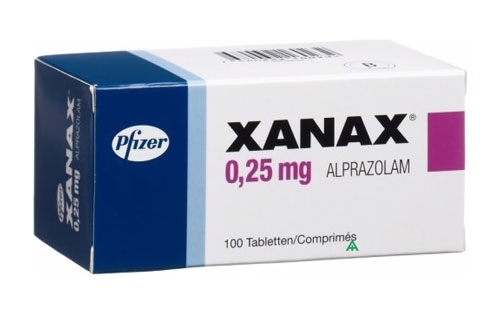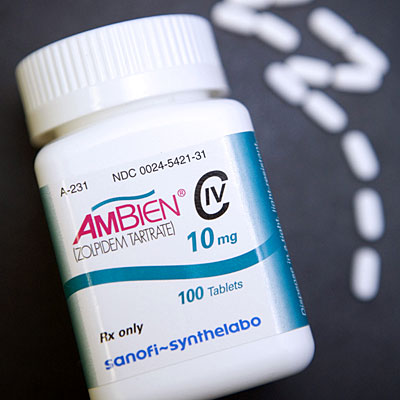Contents
What is Xanax?
Xanax is a Brand name for a short-acting benzodiazepine drug that contains alprazolam as an active ingredient. This drug affects brain chemicals that may be unbalanced in patients with anxiety disorder.
Xanax indications are: generalized anxiety disorder, panic disorder with or without agoraphobia and anxiety caused by depression. It is available in the form of tablet in following doses: 0.25, 1, 2 and 5 mg and in form of extended release tablet as Xanax XR in doses of 3 and 5 mg. Xanax has a fast onset of action and symptomatic relief. 90 % of maximum effects are achieved after the first hour of administration.
Other Brand names on the market for products containing alprazolam as an active ingredient are: Niraval, Alprox, Solanax, Restyl and Esparon.
What is Ambien?
Ambien is a Brand name for a sedative drug that contains zolpidem as an active ingredient. It is used for the treatment of insomnia and other health conditions where major problem is difficulties with falling or staying asleep. Zolpidem slows brain activity and therefore enable to falling asleep. It is available in 5 mg and 10 mg strength tablets for oral use.
This drug is indicated for the short-term management of insomnia which is characterized with sleep initiation difficulties. The usual dose that is needed for muscle relaxant and anticonvulsive effects is 10-20 times higher compared to the dose needed to cause sedation.
This is why Ambien is not used as anticonvulsant and muscle relaxant. Recently, in the UK, zolpidem has been cited in different medical reports as waking persistent vegetative state patients, and it can dramatically improve health conditions of patients who have brain injuries.
Other common products on the market containing zolpidem are: Intermezzo, Edluar, Dormizol, Nimadorm, Zolpimist and Hypnogen.
How does Xanax and Ambien work in the body?
Alprazolam acts by binding nonspecifically to benzodiazepine receptors BNZ1, which induces sleep, and benzodiazepine receptors BNZ2, which affects anticonvulsant activity, muscle relaxation, memory and motor coordination.
BNZ1 and BNZ2 receptors are thought to be coupled to gamma-aminobutyric acid-A or GABAA receptors, that enhances the effects of GABA neurotransmitter by increasing the affinity of GABA for the GABA receptor. Binding of the inhibitory GABA neurotransmitter opens the chloride channel, which results in a hyperpolarization of cell membrane that prevents further cell excitation.
Zolpidem is a nonbenzodiazepine short-acting hypnotic substance that potentiates effects of GABA neurotransmitter, the strongest inhibitory neurotransmitter in the brain, by binding to benzodiazepine receptors places located on the GABA-alpha receptors with chloride channel macromolecular complex.
In contrast to the benzodiazepines which non-selectively interact with all three subtypes of GABA –alpha receptors, zolpidem predominantly and selectively binds to the GABA – alpha-1 receptor. Indicated for the short-term therapy of insomnia, zolpidem works very quickly, generally within 15 minutes, and has a short half-life time of approximately 2-3 hours.
Can patients take Xanax and Ambien together?
Patients should never take these drugs together without medical advice and monitoring. Using Xanax in combination with Ambien may increase the incidence of side effects such as: dizziness, confusion, drowsiness, and difficulty concentrating. Some patients, especially the elderly, may also experience impairment in judgment, thinking, and motor coordination.
Patients should avoid or limit the use of alcohol while being treated with these medications. Patients should also avoid activities that require mental alertness such as driving or operating machinery. During concomitant use of Xanax and Ambien, patients should be monitored by the doctor for potentially prolonged or excessive CNS and respiratory depression.
Ambulatory patients should be counseled to avoid dangerous activities that require motor coordination and mental alertness and until they know how these drugs affect them, and to notify their physician if they experience excessive or prolonged CNS effects that interfere with their normal activities.
The table below shows the incidence of side effects after Xanax and Ambien administration in recommendable doses. The incidence can be increased if these drugs are taken together or overdosed.
| Frequency not defined | Drowsiness (41%), Headache (10-15%), Depression (10-15%), Diarrhea (10-15%), Constipation (10-15%), Dry mouth (10-15%), Tachycardia (5-10%), Confusion (5-10%), Nausea/vomiting (5-10%), Blurred vision (5-10%), Nasal congestion (5-10%), Insomnia (5-10%), Dizziness (5-12%), Syncope (1-5%), Nervousness (1-5%), Akathisia (1-5%), Hypotension (1-5%), Tremor (1-5%), Increased salivation (1-5%), Weight change (1-5%), Allergy (4%), Hallucinations (4%), Sinusitis (4%), Myalgia (4%), Memory disorder (3%), Visual disturbance (3%) |
Special precautions and warnings during Xanax and Ambien administration:
- Ambien may impair patient’s reactions and thinking. Patients may still feel sleepy the morning after taking this drug, especially if they have taken the extended-release form of tablet, or if patient is a woman. Patients should wait at least 4 hours or until they are fully awake before they do anything that requires from them to be awake and alert.
- Ambien can cause severe allergic reactions. Patients should stop taking this drug and get emergency medical help if they exhibit any of following signs and symptoms: difficulty breathing, hives, swelling of lips, face, tongue, or throat.
- Some patiens using Ambien have engaged in activity such as driving, walking, making phone calls or having sex and later having no memory of the activity.
- Patients should not take this drug if they have consumed alcohol during the day or before going to sleep
- Ambien may be habit forming.
- Patients should not use Xanax if they have narrow-angle glaucoma, or if they are also using drugs such as itraconazole or ketoconazole.
- Patients allergic to Xanax or similar medicines such as Valium, Tranxene, Ativan and others should not use them.
- Women should not use Xanax if they are pregnant. This drug can cause birth defects or life-threatening withdrawal symptoms in a newborn.
- Alprazolam may pass into breast milk and may harm a nursing baby. Women should not breast-feed while they are using Xanax.
- Alprazolam may be habit-forming. Misuse of habit-forming medicine can cause addiction, overdose, or even death.
- Patients should not drink alcohol while taking Xanax. This drug can increase alcohol side effects.
- Xanax is not approved for use by anyone younger than 18 years old.
“Can I take Estradiol and levothyroxine together?“
“Does benadryl interact with levothyroxine?“


